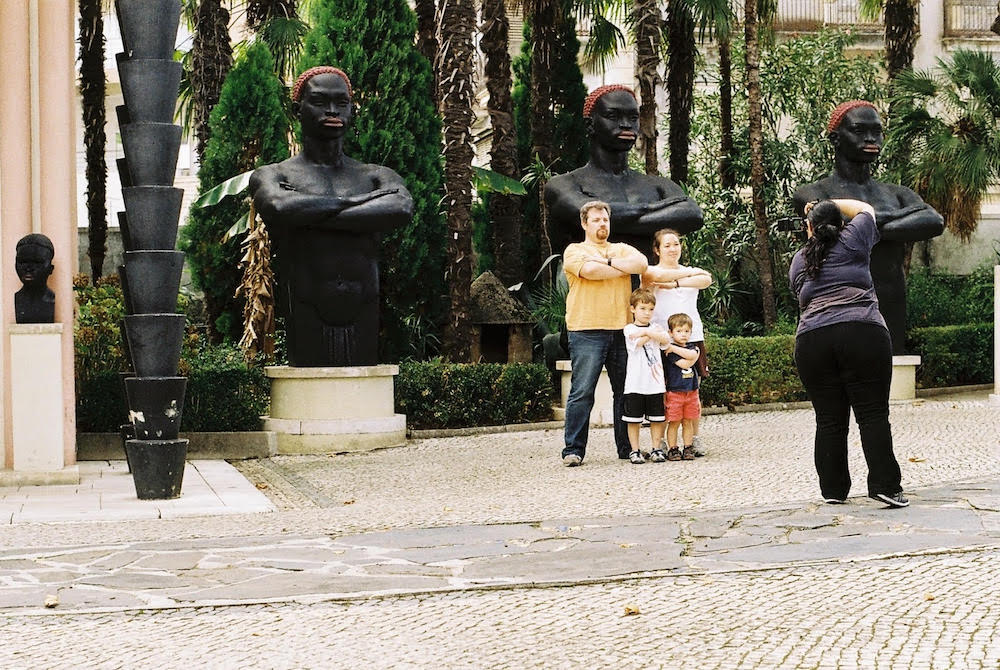Photo Captions
"Portugal dos Pequenitos," Coimbra, Portugal, 2013

This photo shows the entrance to Little Peoples’ Portugal, an educational park for children. Inaugurated in 1940, the park was designed to introduce young children to the ‘Portuguese World,’ at the time an empire stretching from southwestern Europe and Portugal’s Atlantic islands to Southern Africa and East Asia. Miniature versions of famous monuments, characteristic houses, and typical objects from both metropole and colonies were on display for the children. Visitors could also encounter statues representing people over whom Portugal claimed dominion, among them Africans, as demonstrated by the perennial big-lipped, racist caricatures that you see in the photo.
Portugal’s empire disintegrated in 1975 after thirteen years of war in its colonies in Africa and a revolution that brought down the country’s 48-year long dictatorship. Decolonization was a sea change in the political, social, and cultural life on both sides of the colonial divide. Yet, Little Peoples’ Portugal remained mostly unchanged, showing little indication of the altering circumstances. Some explanatory texts for visitors changed to account for the end of Portugal’s empire, and the new texts now redefined the so-called voyages of discovery as the starting point of a noble project of cultural globalization. To this day, however, no further modifications or critical contextualization have been provided.
Every year, over 200,000 patrons still visit the park, run by a private association active in the promotion of cultural, social, and educational offers to the people of central Portugal and named after its founder, the medical doctor, university professor, politician, and inventor of Little People’s Portugal, Bissaya Barreto. Among the patrons visiting the park are school groups and individual visitors – including tourists from abroad like the family posing in the picture, mimicking the statues’ posture, and gazing confidently at the photographer who offered to take their picture as a souvenir for a few Euros. But look more closely: Not all of them look in the same direction. The eyes of the younger child are diverted uncomfortably towards the other photographer: Me.
Christoph Kalter
